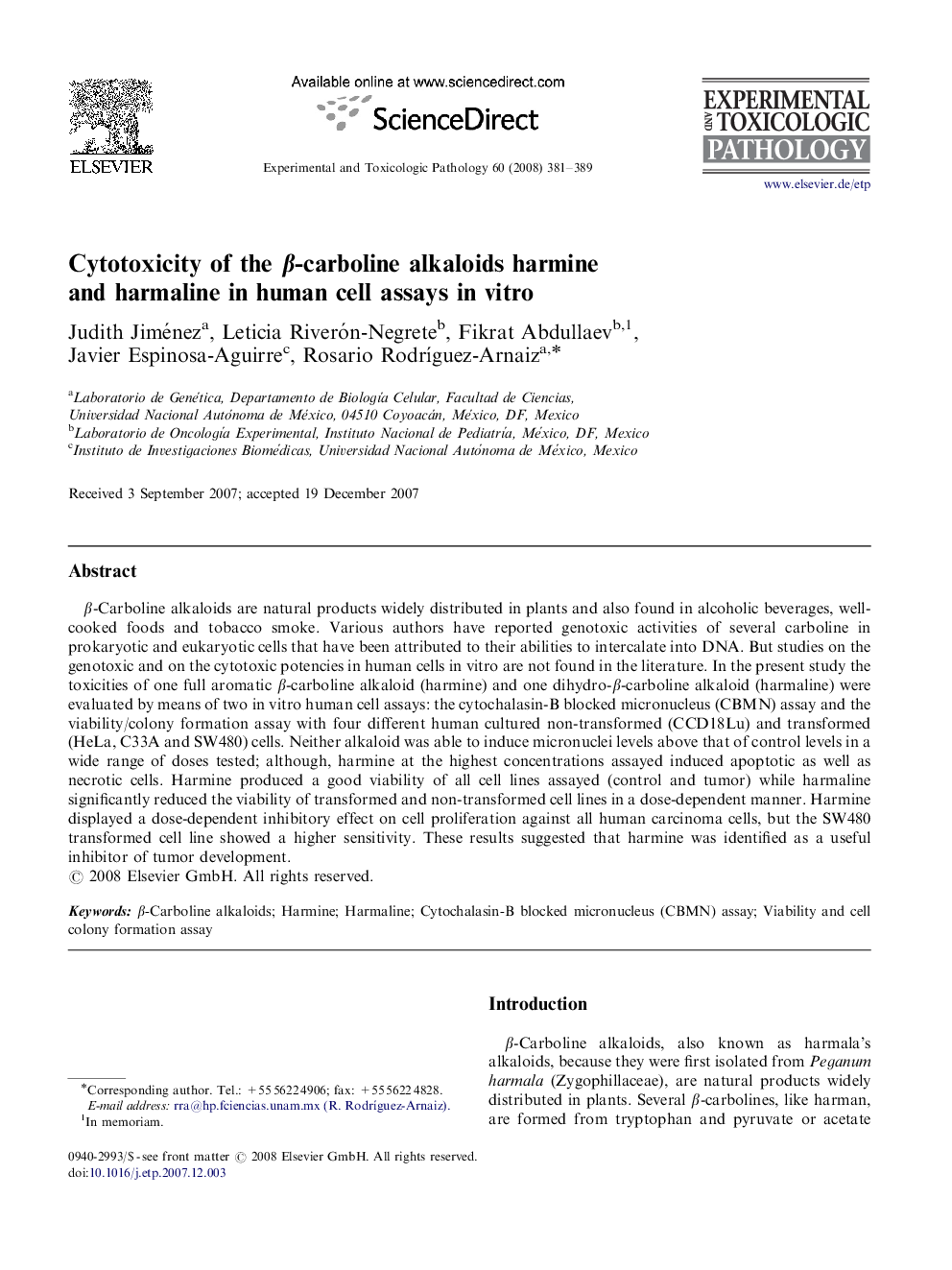| کد مقاله | کد نشریه | سال انتشار | مقاله انگلیسی | نسخه تمام متن |
|---|---|---|---|---|
| 2499863 | 1556845 | 2008 | 9 صفحه PDF | دانلود رایگان |

β-Carboline alkaloids are natural products widely distributed in plants and also found in alcoholic beverages, well-cooked foods and tobacco smoke. Various authors have reported genotoxic activities of several carboline in prokaryotic and eukaryotic cells that have been attributed to their abilities to intercalate into DNA. But studies on the genotoxic and on the cytotoxic potencies in human cells in vitro are not found in the literature. In the present study the toxicities of one full aromatic β-carboline alkaloid (harmine) and one dihydro-β-carboline alkaloid (harmaline) were evaluated by means of two in vitro human cell assays: the cytochalasin-B blocked micronucleus (CBMN) assay and the viability/colony formation assay with four different human cultured non-transformed (CCD18Lu) and transformed (HeLa, C33A and SW480) cells. Neither alkaloid was able to induce micronuclei levels above that of control levels in a wide range of doses tested; although, harmine at the highest concentrations assayed induced apoptotic as well as necrotic cells. Harmine produced a good viability of all cell lines assayed (control and tumor) while harmaline significantly reduced the viability of transformed and non-transformed cell lines in a dose-dependent manner. Harmine displayed a dose-dependent inhibitory effect on cell proliferation against all human carcinoma cells, but the SW480 transformed cell line showed a higher sensitivity. These results suggested that harmine was identified as a useful inhibitor of tumor development.
Journal: Experimental and Toxicologic Pathology - Volume 60, Issues 4–5, 5 August 2008, Pages 381–389